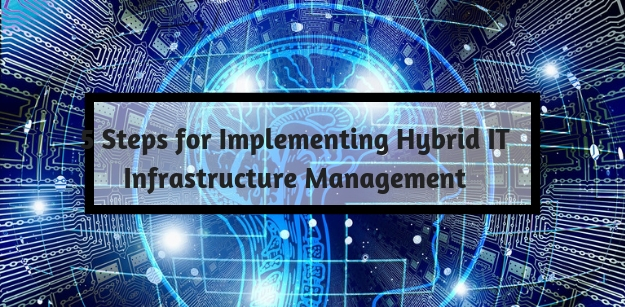One of the main challenges for IT administrators is to improve the speed of new features and service on their platforms without impacting the strain on legacy technology. Businesses must be capable of transforming their infrastructure from an offline system to a cloud-based model without disrupting their ability to deliver products and services for their customers.
One practical way to do this is by introducing changes in phases, moving the necessary components online first and testing them regularly to ensure compatibility. This approach leads to a hybrid IT infrastructure where parts of your system are online, while other components are inaccessible. While some businesses move on from a hybrid infrastructure to a fully cloud-based network, others remain in the hybrid infrastructure indefinitely because it suits their particular business objectives.

Whether you are trying to build your next-generation online data center or planning to keep a hybrid IT platform, knowledge on how to manage the hybrid IT model will help you improve your infrastructure significantly. Getting success with a hybrid IT model is all about getting the right mix of on-premises systems combined with secure private and public clouds.
The 5 main steps for implementing a hybrid IT infrastructure include the following:
1. Secure Your Hybrid IT
A thorough security audit and stringent controls should be the priority on your list. Cloud infrastructure involves evaluation of firewall policies and adoption of applications that need firewall rules.
You will also need to re-examine existing user access, privileges, and policies including the controls available for admin accounts. Comprehensive user monitoring tools and SSO logging solutions can also help identify risky IT situations. Thorough guidelines will help your organization protect your online assets better and mitigate risks.
2. Manage the Workload
Although the cloud allows you to put your workload online, it doesn’t necessarily mean that you should. Your organization’s workload is probably structured in a way that improves speed and efficiency for your business. Some organizations can benefit from putting their work online but others would be better off with keeping it off the cloud.
Generic infrastructures are good for implementing cloud solutions. However, these models may not work as soon as there is a need for customization. There are four key factors that will influence your workload placement and how much you should move to the cloud. These are:
- Hybrid IT security and compliance
- The total cost of ownership
- Application performance
- Level of control with regard to company culture and policies
3. Cross-Platform Compatibility
A hybrid infrastructure brings a lot of new management and tracking complexities to the mix. One problem is to ensure that your cloud platform is compatible with different operating systems and software.
You will probably want to avoid the on-site method of putting different tools together as this will only add problems down the road. Developers are coming up with new methods that help integrate databases and system processes easily and allow the administrators to manage the IT environment from a single point.
Make sure that you consider the capabilities that you need in your infrastructure and consider how integration with more platforms might impact your systems and environment.
4. Evaluate Your Infrastructure
There should be a way to continuously evaluate your hybrid IT infrastructure management which ensures that there is a culture of improvement. You should begin by identifying your core applications that provide critical support to business operations. These should receive the primary focus for innovation and improvement.
The business will also need to take inventory of apps that require constant administrator attention and distinguish them from apps that don’t need support on a regular basis. Furthermore, some apps may be central to perform a specific function but may not be necessary for the larger organizational activities. How you prioritize upgrades should be based on your needs.
5. Consider the Data Security
The database being used by your IT infrastructure is quite important to your operations. To keep it secure, you will need to stay on top of security measures and implement a host of measures that can keep your company’s data secure.
It really comes down to understanding the responsibilities that can be outsourced to a cloud vendor providing SaasS, IaaS and SECaaS services, and identifying the functions that will remain with the organization.
Invest in Hybrid IT
Adoption of a hybrid IT infrastructure management program can bring a lot of benefits to your organization. However, the venture is costly and you will need to be committed to investing, particularly in network and security. If you have a well-defined plan, it can help you keep an eye on expenses.
You won’t see ROI and benefits right away as it takes time to get users for cloud-based platforms. Positive cash flows will start generating usually after 1 – 2 years and remain steady after that.